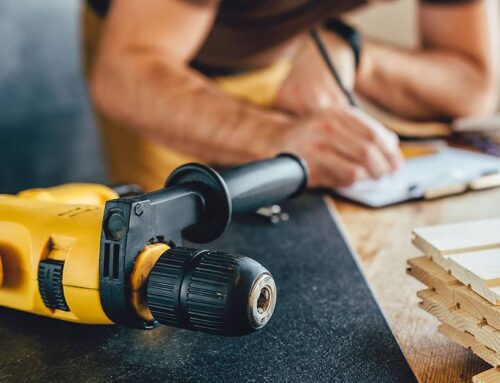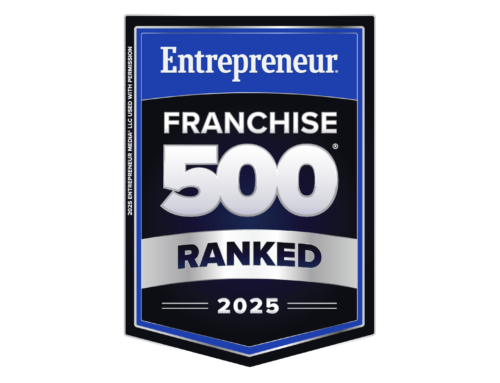
While the government’s foreclosure moratorium and mortgage forbearance program provided relief to many homeowners during the height of the COVID-19 pandemic, it created an unprecedented situation: historically high numbers of seriously delinquent loans and historically low levels of foreclosure activity. Despite this skew in data, Illinois still ranked #2 on the list of highest foreclosure rates, nationwide, during the first half of the year. Delaware topped the list and Florida came in third.
“With the moratorium scheduled to end on July 31, and half of the remaining borrowers in forbearance scheduled to exit that program over the next six months, we should start to get a more accurate read on the level of financial distress the pandemic has caused for homeowners across the country,” said Rick Sharga, executive Vice President of RealtyTrac.
As a real estate investor, distressed homeowners spell O-P-P-O-R-T-U-N-I-T-Y. A high foreclosure rate can generate many investment opportunities, but only if you take the right approach and strategy.
While you can buy distressed homes for sale in any one of the four phases—pre-foreclosure, auction sale, real estate-owned (REO), or government-owned—most do so at the REO stage based on the belief that this is the safest and easiest approach. However, many don’t realize that foreclosures are lengthy, heavily regulated judicial processes in Illinois and, as a result, it can be tough to find a good deal. Here, we will try to make it simple by outlining the five steps for buying a Chicago property foreclosure from the bank.
Step One: Finding a Foreclosed Property
In looking for a foreclosed home to buy in Chicago, you may find yourself overwhelmed with options. There’s going to be a lot of inventory coming onto the market over the next few months. To help maintain a focus on your business objectives, conduct research and identify just one or two up-and-coming Chicago neighborhoods, like Avondale and Humboldt Park, that align with your investment goals and hold the greatest potential for a healthy return on investment. Then, determine what type of property you’re seeking—be it a condo, a single-family house, or a multi-family building. This will narrow your search to a far more manageable scope.
Next, you will need to locate foreclosure purchase opportunities that meet your specifications. There are several ways to do this:
- Sign on with a real estate agent specializing in Chicago investment properties and familiar with buying foreclosures.
- Drive through your target neighborhoods and look for broker signs that read “Foreclosure,” “Bank Owned,” or “Bank Repo.”
- Look on individual bank and credit union websites. Most major financial institutions maintain an online list of their property holdings for sale.
- Reach out to an asset management company. Some lenders hire these companies to manage the disposition of their real estate assets.
- Search government agency websites, such as the Department of Treasury, HUD, Fannie Mae, and the Cook County Land Bank.
- Check with the Cook County Sheriff’s Office or the Judicial Sales Corporation for a list of homes that were scheduled for auction, but were then canceled or bought back by the lender.
Insider Knowledge: All real estate agents have exclusive access to the MLS, where foreclosures are listed. But, a broker that specializes in managing foreclosed home sales for banks may be able to provide you with leads that are not yet listed.
Step Two: Take a Good Look and Run the Numbers
It’s important to understand that most foreclosure properties have been neglected. These homes were subject to foreclosure because the owners couldn’t make the payments, so it’s quite likely that they were unable to afford proper maintenance and repairs. What’s more, a vacant house can deteriorate quickly, especially during Chicago’s harsh winter seasons. Therefore, you will need to include a budget for repairs.
There are several ways to calculate the cost of repairs. Online, you can find any number of real estate investment analysis and valuation methods that will guide you through the process of evaluating a house. However, the items mentioned in each list can vary and many are not comprehensive enough to give you a true picture of everything that will need to be addressed. What’s more, they won’t help you understand the costs involved or factor major regional variations into the equation. The most comprehensive and user-friendly repair cost estimator is HomeVestors® proprietary ValueChek™ software, which provides regionally-specific cost estimates for a vast range of different problems and issues.
Pro Tip: Bring a flashlight when you go to look at the house. The bank may not have left the electricity on, making it difficult to see what you are buying.
Step Three: Research Any Hidden Costs Associated With the Purchase
Researching is essential before making a purchase. The bank may have already tended to any back taxes and liens in rare cases, rolling it into the price. But that’s not always a given and there may be tax liens at play. Your title company will be able to uncover these for you.
Even if you’re able to determine that there are no liens, that doesn’t mean you are necessarily in the clear for fees associated with the purchase. Purchasing a foreclosed condo in Illinois, for example, can come with potentially huge hidden costs as a result of the 2007 amendment to the Condominium Property Act. This amendment places responsibility on the purchaser of a foreclosed condo to pay the last six months’ worth of condo association fees and any legal fees that the association incurred while trying to collect from the previous owners. You can imagine how expensive this could become! Don’t place yourself in a position to suffer sticker shock because you didn’t take the time to research.
Step Four: Estimate Your Profit Margin When Selling at Full Market Value
Take a look at the last three to six months of comparable sales in the neighborhood where your potential Chicago investment property is located. You can get this information from a real estate agent or by searching public records. Select the three properties that represent the closest matches in terms of square footage, number of bedrooms and baths, and amenities. Remember, you are comparing these properties to how your foreclosure purchase will look after buying and renovating the property.
Then, run your calculations:
Full Market Value – Purchase Price, Closing Costs, and Repair Costs = Profit Margin
If you are comfortable with the potential profit margin, it’s time to draw up the paperwork and make an offer.
Step Five: Make an Offer They Won’t Refuse
While you are out to get the best possible deal, it’s a mistake to assume that the bank wants to offload the property so badly that they will accept a lowball offer. Banks are not in the business of selling houses, so they typically outsource that job to real estate agents. While the agent wants to get the house sold quickly, they also want to get the best possible sale price to maximize their commission and maintain a positive professional relationship with the bank. An insultingly low offer can stop negotiations dead in their tracks, so make sure your offer is reasonable. If you feel the need to justify or explain your reasoning behind your offer, be sure to make your case convincingly.
Before the property goes on the market, the bank will typically secure an appraisal or a broker price opinion (BPO). These valuation assessments consider the property’s condition and any damage or deterioration. This gives the bank an accurate idea of the property’s market value.
Generally speaking, you can expect to acquire an REO property for a sum that’s anywhere from 5-15% lower than the current market value, with some banks willing to go as low as a 25% markdown. However, if the house is a good deal, like those you’ll find in Chicago’s South Side, you will likely face a fair amount of competition as you seek to acquire it. Sometimes banks simply go with the best offer they receive, but other times, they may pick the top two before instructing the finalists to re-submit their “highest and best” offer.
Deciding How Much to Offer
Look up the MLS listing with your real estate agent.
Perform a search of all that agent’s foreclosure listings for the last several months.
Compare the sales price to the list price to determine trends. If most of their listings sell for 10-12% below list price, that will be your sweet spot for making an offer.
Making an offer on a foreclosed home is no different than a typical real estate deal, except for a few details:
- Offers must be accompanied by proof of funds if you are making a cash offer or using hard money. If you intend to finance the purchase with a conventional loan, sometimes the seller will require you to be pre-approved by a mortgage company of their choice. Now, that doesn’t necessarily mean you have to finance through that company; you may just need a pre-approval.
- Your offer needs to be very specific. If you are willing to shorten the inspection period or pitch in for seller-side closing costs, you must make note of this. This could give you an edge over the others who have made an offer.
- Most foreclosures are sold “as is” so you are not likely to win concessions for repairs or inspections—at least during the offer stage.
- Expect that the bank will be slow to respond to your offer. Sometimes you can get a response in as little as 48-72 hours, but it could also take a week or longer.
The time between when the bank verbally accepts your offer and the time when you complete the paperwork to formally seal the deal could take an additional week or more. In the meantime, the listing will remain active on the MLS so the bank can review offers from others who want to buy investment property in Chicago. The bottom line is that your offer needs to be sufficiently compelling so it stands out from the crowd.
Know the Difference.
A prequalification letter is simply a lender’s statement that they may finance a purchase for you. It is not based on a credit analysis or your actual ability to purchase a property.
A pre-approval letter shows that a lender has vetted your financial abilities and has offered you a conditional commitment for financing.
The Best-value Strategy for Real Estate Investing
The bank often acquires these distressed properties in cases where bidders failed to meet the auction reserve (the minimum amount that the bank will accept) when the property was at auction. Once the bank owns it, they can set their price—and even profit. Many banks will decide against holding public auctions for each property, as this allows the lender to control how many holdings they have at any given point in time.
Real estate investors must be cautious, performing thorough due diligence and skillfully crafting an offer. It’s a lot of effort and, even then, you still may not win out over the competition.
However, you can side-step the competition and even secure a better deal by generating leads on properties that have not yet fallen into the hands of the bank through foreclosure. A real estate investing HomeVestors® franchise provides a nationally-trusted brand, We Buy Ugly Houses®, that distressed homeowners reach out to every day. HomeVestors® franchisees also have access to proprietary tools and resources to help ensure that every property acquisition represents a sound business decision. If you are interested in learning more about how to gain a winning edge in your local real estate marketplace, reach out today.
Each franchise office is independently owned and operated.
Contact
"*" indicates required fields





